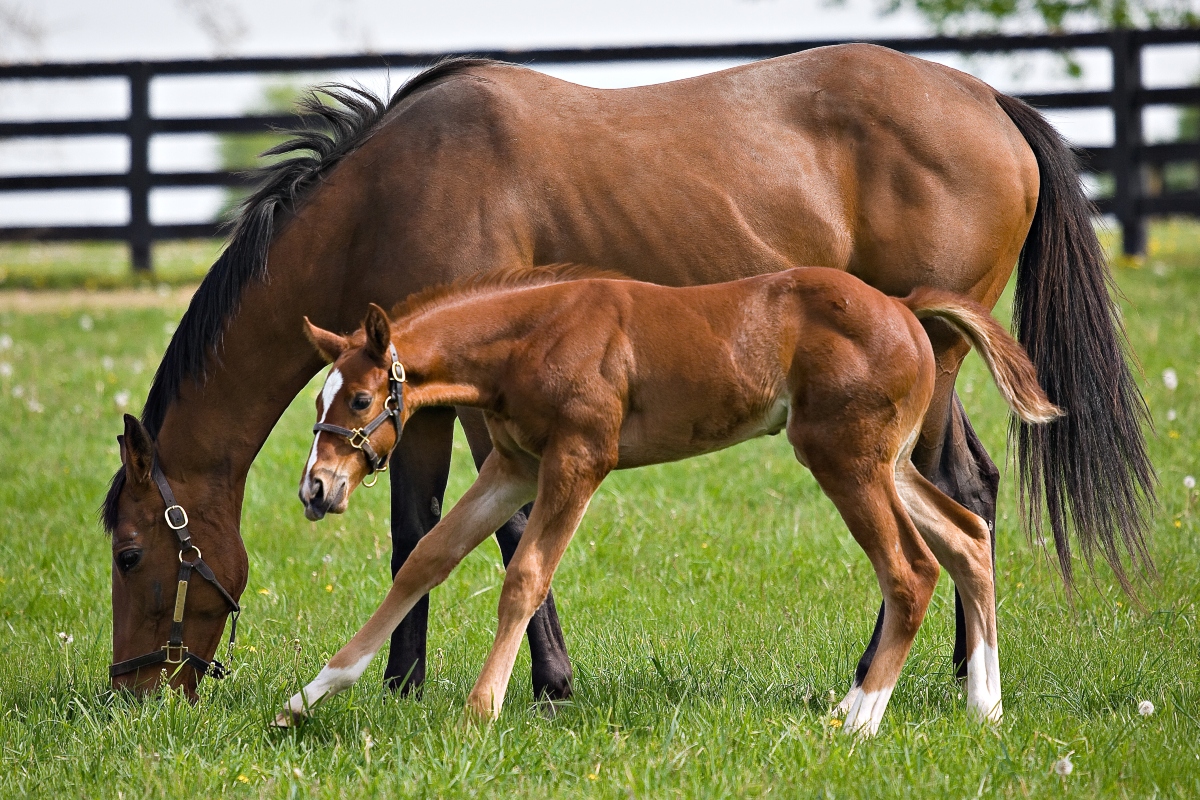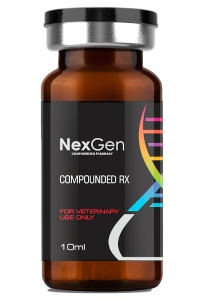Chemical Ovulation Control in Mares

Mares are seasonally polyestrus, which means that they experience regular estrus cycles during late Spring, Summer and early Fall, and none during the Winter. These cycles are controlled by hormones, which respond to increases or decreases in daylight duration with the onset of the seasons.
The typical mare cycles regularly between March and October, with each estrous period being an average length of twenty-one days.1
For horse breeders or managers, it is critical to understand the estrous cycle of mares. Breeding of mares cannot be successfully achieved throughout the whole year as mares breed seasonally. Mares are only able to breed when day length is more than 16 h, and this period is known as the breeding season. Their estrous cycle is approximately 21 days with 5-7 days of estrus and 14 to 15 days of a diestrus period. The estrous cycle of the mare is mainly controlled by gonadotropins, which control follicular development and ovulation. Mares exhibit unique ovulatory events which are not observed in other species. A LH surge occurs for several days, with levels of LH reaching their peak after ovulation. The LH level at the time of LH peak is lower than most other species. The unique anatomical structure of the ovaries of mares is known to limit the number of eggs ovulated. Several attempts have been made to develop chemical/hormonal agents which might be used to manipulate the timed ovulation of mares.2

Graphic via equine-reproduction.com.
There are a number of situations in which it is desirable to suppress part or all of the reproductive endocrine system in a horse, notably the competing animal whose tractability during training, or performance during competition, is compromised by the expression of sexual or aggressive behavior. The current therapeutic approaches to reproductive endocrine suppression include gonadectomy and progestagen administration, where the former carries surgical risks and entails irreversible loss of breeding potential, and effective progestagen therapy requires frequent administration for extended periods and is banned in some competing animals as potentially anabolic. In this context, preventing the action of gonadotrophin releasing hormone (GnRH) by blocking its pituitary receptors is an attractive alternative for reversibly rendering mares anestrus or depressing testosterone secretion or spermatogenesis in stallions.3
 For
purposes of scheduling breeding and for the behavioral control of intact mares,
it is often desirable for horse owners and managers to employ methods of
ovulation control. The most effective methods in this regard involve chemical
agents (medications and synthetic hormones). According to the literature, the
most widely-tested agents have included hCG, native GnRH, Deslorelin
(GnRH-agonist), Buserelin (GnRH analogue), equine pituitary extracts
and equine chorionic gonadotropin (eCG or PMSG). These formulations an others
used for the chemical regulation of ovulation in mares are typically available
through a veterinarian or a veterinary
compounding pharmacy.
For
purposes of scheduling breeding and for the behavioral control of intact mares,
it is often desirable for horse owners and managers to employ methods of
ovulation control. The most effective methods in this regard involve chemical
agents (medications and synthetic hormones). According to the literature, the
most widely-tested agents have included hCG, native GnRH, Deslorelin
(GnRH-agonist), Buserelin (GnRH analogue), equine pituitary extracts
and equine chorionic gonadotropin (eCG or PMSG). These formulations an others
used for the chemical regulation of ovulation in mares are typically available
through a veterinarian or a veterinary
compounding pharmacy.
1Kuhns, B. Brood Mare Management, Modern Veterinary Practice, Volume 55/Number 5, p.359, May, 1974.
2Yoon, M. (2012). The Estrous Cycle and Induction of Ovulation in Mares. Journal of Animal Science and Technology. 54. 10.5187/JAST.2012.54.3.165.
3Stout, T.A.E., Colenbrander, B. Suppressing reproductive activity in horses using GnRH vaccines, antagonists or agonists, Animal Reproduction Science, Volumes 82–83, July 2004, p. 633-643.
Equine Breeding Products
You can find Deslorelin and Buserelin in our online store. Login to your account to view prices and purchase or create an account. Please note you must have a valid veterinarian license to create an account. If you do not, please forward our information to your veterinarian.
About NexGen Pharmaceuticals
NexGen Pharmaceuticals is an industry-leading veterinary compounding pharmacy, offering sterile and non-sterile compounding services nationwide. Unlike other veterinary compounding pharmacies, NexGen focuses on drugs that are difficult to find or are no longer available due to manufacturer discontinuance or have yet to be offered commercially for veterinary applications, but which still serve a critical need for our customers. We also specialize in wildlife pharmaceuticals, including sedatives and their antagonists, offering many unique options to serve a wide array of zoo animal and wildlife immobilization and anesthesia requirements.
Our pharmacists are also encouraged to develop strong working relationships with our veterinarians in order to better care for veterinary patients. Such relationships foster an ever-increasing knowledge base upon which pharmacists and veterinarians can draw, making both significantly more effective in their professional roles.



